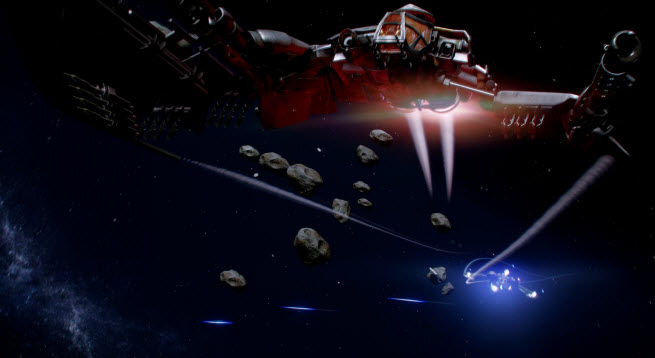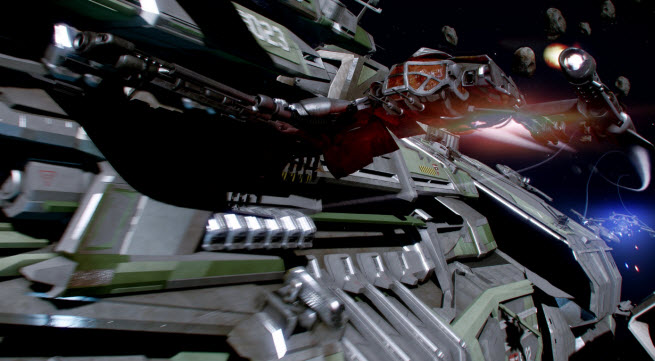The creator of the legendary Wing Commander sci-fi spaceship combat games is getting back into the gaming cockpit today with the announcement of Chris Roberts’ new massively multiplayer online game, Star Citizen. This is an extremely ambitious online game that aims to bring back the glory days of sci-fi space combat simulations in a persistent online world. The game’s art work and demo show that the 3D graphics animations are as eye-popping as a movie. You can, for instance, check out every inch of a kilometer-long battle carrier without finding obvious visual flaws.
 “I want to bring space games back,” said Roberts, the chief creative officer at Cloud Imperium Games, in an interview with GamesBeat. “The space sims just aren’t happening anymore. This is a spiritual successor to games like Wing Commander and Privateer,” which is another Roberts creation.
“I want to bring space games back,” said Roberts, the chief creative officer at Cloud Imperium Games, in an interview with GamesBeat. “The space sims just aren’t happening anymore. This is a spiritual successor to games like Wing Commander and Privateer,” which is another Roberts creation.
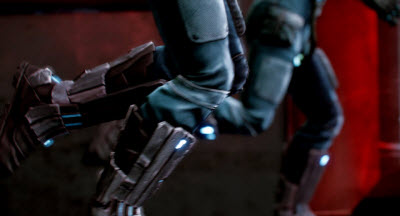 Roberts teased the game on his web site, Roberts Space Industries, after hackers discovered the site by accident. Now that I’ve seen a demo of Star Citizen, it reminds me how much I miss those epic space battles where you save the human race from the evil aliens. Roberts bets that the future is all about outstanding movie-like game experiences, not casual social networking games. That’s a bet that only someone with decades of game-making experience can make with any degree of confidence.
Roberts teased the game on his web site, Roberts Space Industries, after hackers discovered the site by accident. Now that I’ve seen a demo of Star Citizen, it reminds me how much I miss those epic space battles where you save the human race from the evil aliens. Roberts bets that the future is all about outstanding movie-like game experiences, not casual social networking games. That’s a bet that only someone with decades of game-making experience can make with any degree of confidence.
Reaching back to the past
Roberts (pictured above) is unveiling the game at the GDC Online conference today in Austin, Texas. He’s used to swinging for the fences. He started in games at Origin Systems, the Austin game studio that Electronic Arts later bought. He became a star in 1990 with the release of Wing Commander, a space combat game that produced nine sequels and spinoffs. For a time, it was a huge business for Electronic Arts, but the copycat sequels bored gamers and drove the franchise into the ground.
(Wing Commander, by the way, was the reason I spent $2,000 on a brand-new 486 PC. It was an addictive game where you flew space combat fighters as if they were World War II fighters, an imaginative twist on the space combat in the Star Wars films. I used to play the game so much that my hand got sore from holding the joystick. Naturally, I kept playing and switched to the other hand when the need arose).
Roberts left Origin in 1996 and started his own company, Digital Anvil. Roberts said that no one has really picked up the mantle in sci-fi combat sims since his last company created the ill-fated Freelancer, published by Microsoft in 1999. That game took 4.5 years to make (and six to get to market), and by the end of it, Roberts had left the firm to make movies and Microsoft acquired his compan Freelancer was not a huge commercial success, but it was memorable. In the game, the player went from planet to planet, running missions and building a cool spacecraft. In Roberts’ original vision, each one of those worlds was a living, breathing thing, full of people and adventures. It was a precursor to modern massively multiplayer online games.
“At the end of Digital Anvil, I was burned out,” he said. “I didn’t feel the drive to make games. I didn’t do it to sell 2 million units. I saw a game experience in my head that I wanted to play. That was my impetus. But I was frustrated by development technology. I left four years into Freelancer, and it was two more before it game out.”
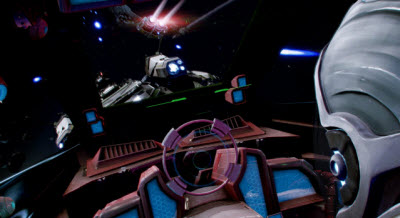 Lost in space and re-entry
Lost in space and re-entry
“There were huge, long cycles. You work hard and then start the cycle again. I wasn’t keen on getting sucked into management. I took a break,” Roberts said.
He took time out of his gaming career to fulfill his dream of making a movie. In that sense, he was also a pioneer of transmedia, or taking an entertainment property from one medium to another. He created the Wing Commander film, a $30 million movie that generated a third of that at the box office. Roberts never directed another film, but he went on to produce films including The Punisher, The Jacket and Lord of War (the latter starring Nicholas Cage). Altogether, he produced 10 movies and worked with a big German film fund that poured $750 million into both films and real estate.
Roberts said that he left games in part because he was frustrated with the technology and felt that film could do a better job of realizing the visions in his head. But now he feels that PC gaming technology has finally advanced far ahead of the game consoles and can now produce high-quality imagery that can look very cool.
“I began to feel an itch,” he said. “I wanted to realize a vision. The picture was in my head. The technology to a point where the stuff we could do was great. And the other aspect is the move to online and digital business models. That’s really exciting to me,” referring to trends such as distributing games digitally directly to consumers.
“Now you can interact with the community directly and get feedback loops,” he said.
And he thinks there’s pent-up demand for cool games. Within an hour of taking its web site live, Cloud Imperium, with no publicity, had 1,000 people signed up for its beta test. Now, 30,000 have signed up. You can test ideas, and you bring games to market that don’t need 10 million fans in order to be a success.
“There’s a shift in the market and the technology,” he said.
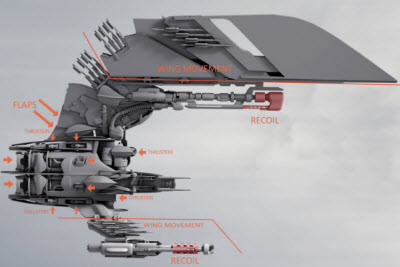 Roberts is easing back into gaming. He was scoping out game development trends at the Dice Summit conference in Las Vegas in 2011, where I ran into him. At that time, he was considering his options. He thought about doing a big console game, but he felt that wasn’t so interesting. And he wanted to control his own destiny, not work for a major publisher.
Roberts is easing back into gaming. He was scoping out game development trends at the Dice Summit conference in Las Vegas in 2011, where I ran into him. At that time, he was considering his options. He thought about doing a big console game, but he felt that wasn’t so interesting. And he wanted to control his own destiny, not work for a major publisher.
But about a year ago, he starting experimenting with technology. He focused on the PC, where technology is moving far ahead of the consoles. He saw successes such as Riot Games’ League of Legends and Wargaming.net’s World of Tanks. Both are downloadable games that have tens of millions of players.
“I feel like there aren’t so many champions of the PC,” he said.
By April, he formally started Cloud Imperium Games, in West Hollywood, Calif., with chief executive Ortwin Freyermuth, a veteran film production executive and media attorney. Roberts started out with a very small team, working with an established technology, Crytek’s Cry Engine 3. That is one lesson he learned from Freelancer, whose costs soared out of control. The core of his team is no more than 50 people, and he can tap specialists outside of the company.
“I could not have done this in the old days,” he said.
Still, it will take two more years to complete the game.
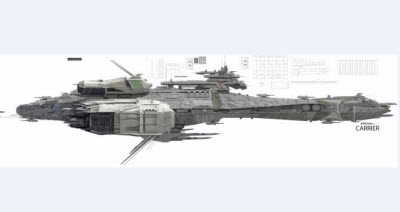 The design of Star Citizen
The design of Star Citizen
As you can tell from the screen shots, the Cry Engine 3 technology can render a full space battle carrier, which is a kilometer in length and resembles the Tiger’s Claw carrier in Wing Commander. If you zoom in on any given yard of the carrier, it still looks real, with rivets, tiles, and bumpy surfaces. The flight deck has as many as 2 million polygons, the surfaces that make up 3D animated objects. But it doesn’t take forever to create these assets. Roberts calls this rendering at scale.
The ship is just a part of a PC-only persistent universe dubbed Star Citizen. You can earn your citizenship via military duty or civic duty. You can become a privateer or freelancer, operating a merchant ship that transports cargo and fights off enemy pirates. Within Star Citizen, you can play a story-driven, narrative game that resembles Wing Commander. Dubbed Squadron 42, the game within a game requires you to perform one mission after another until you complete a full story.
“You sign up for a tour of duty within this galaxy-wide, falling Roman empire,” he said. “On the western borders, some alien barbarian races are invading. On the eastern side is more benign trade.”
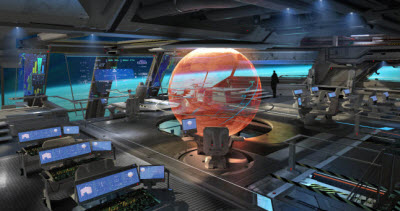 The Squadron 42 team is an elite military unit, like the French Foreign Legion. They quell rebellions and protect the galaxy. Players will be able to move from star system to star system through “jump points” that are like folds in space where you can travel anywhere you want. But within star systems, you’ll move at slower speeds. Each ship will have trade-offs in terms of weapons, armor, and speed. The physics models will be very detailed and determine whether one spaceship is more maneuverable than another. Each ship can have four thrusters to change its position in space; if one is damaged, the ship loses its capability to maneuver well. The ships fly by wire, much like an F-35 Lightning II.
The Squadron 42 team is an elite military unit, like the French Foreign Legion. They quell rebellions and protect the galaxy. Players will be able to move from star system to star system through “jump points” that are like folds in space where you can travel anywhere you want. But within star systems, you’ll move at slower speeds. Each ship will have trade-offs in terms of weapons, armor, and speed. The physics models will be very detailed and determine whether one spaceship is more maneuverable than another. Each ship can have four thrusters to change its position in space; if one is damaged, the ship loses its capability to maneuver well. The ships fly by wire, much like an F-35 Lightning II.
Each spacecraft will have a distinct cockpit and a fully-rendered pilot. Each pilot has 100,000 polygons, or about 10 times the usual number in terms of 3D graphics animation. Players can make money flying trade routes. When intercepted, a battle takes place. In cooperative mode, they can tap other players to defend themselves.
Toward the core of the galaxy, the military preserves law and order. But on the edge, pirates likely operate with freedom.
“On the outer edge, it’s like Somalia,” he said. “A warlord may show up and jack your stuff.”
Players will be able to host their own universe and multiplayer version of the game. They will have their own content creation and “modding” tools, so they can modify the game. Ships will “level up” by adding hundreds of components.
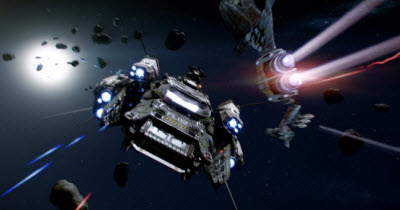 In making use of the community, Roberts is tapping into recent successes like Minecraft and Team Fortress 2, which support community creations. In Star Citizen, players will be able to enhance and create modifications to their own spaceships and then be able to sell them in a marketplace. Roberts plans to roll out lots of small updates over time. And players will likely be able to prepurchase their space ships from the company.
In making use of the community, Roberts is tapping into recent successes like Minecraft and Team Fortress 2, which support community creations. In Star Citizen, players will be able to enhance and create modifications to their own spaceships and then be able to sell them in a marketplace. Roberts plans to roll out lots of small updates over time. And players will likely be able to prepurchase their space ships from the company.
“It will feel like things are happening and new events are occurring in the galaxy,” he said. “My goal is to make it feel alive and real to players. We will riff off the players’ own creations.”
There isn’t much competition out there. EA released a minor Wing Commander game on Xbox Live Arcade, but it wasn’t a success. The last major Wing Commander title came out in 1997.
Roberts says he has an “equity commitment” for the game. But he will also try to “crowdfund” part of it on his own web site in order to validate demand for the game. You may, for instance, be able to prepay for your game and get early access to it. He hopes to raise a few million dollars via crowdfunding.
“I believe there are high-end PC gamers who want to have an experience like this,” Roberts said, noting that Dell’s Alienware division gave him an Alienware 18x laptop to show off the game assets.
“I hope that people will be excited about what I show,” he said. “There is still a fan base out there.”
VentureBeat's mission is to be a digital town square for technical decision-makers to gain knowledge about transformative enterprise technology and transact. Learn More
